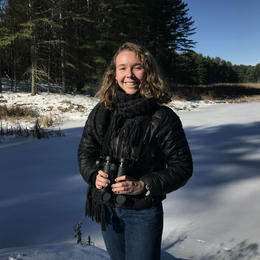Buds are breaking, leaves and flowers are returning and we starting to put plants in the ground. Where did these plants come from? Seeds! Even the widest, tallest trees came from seeds the size of a bean. Every seed contains a plant! So, why don't seeds inside packets just start growing through the bag? Because plants, like all living things, must have certain conditions and needs met in order for them to be able to grow, or germinate! What do you already know about plant's needs? Do you think all plants need the same conditions to grow?
Plants must have these five needs met in order to grow:
1). Sun: Plants use sunlight to make their own food through a process called photosynthesis. Photosynthesis requires sunlight, water and carbon dioxide from the air to occur. The energy from the sunlight breaks down the water and carbon dioxide in order to produce a sugar for the plant to eat called glucose as well as oxygen. So, without the sun, plants would go hungry and we would not benefit from all the oxygen they create!
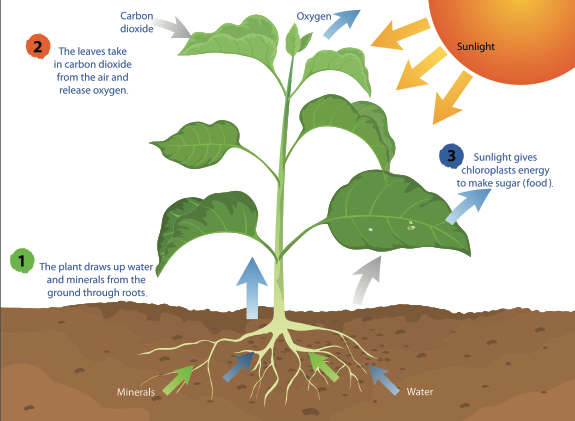
2). Water: Plants absorb their water through their roots in the soil. Now we know that water plays an important in a plant's food production, or photosynthesis. But, water also transports nutrients to the plant and regulates the plant's temperature!
3). Air: We know that plants need air to photosynthesize, but they also need it to breathe! Plant roots also need oxygen to gather water and trasnport nutrients to the plant.
4). Space: If you have ever helped out in a garden, you may have noticed that seed packets direct you to plant your seeds a certain number of inches apart. This is because plants need room to grow. When plants are planted too closely they may compete with each other - one plant may absorb all the water and nutrients and cause the other plant to die. You can see this happening in real time in most forests. There might be a cluster of saplings, or baby trees with trunks no thicker than a twig. If you return back to that forest over the years you will notice that cluster will get smaller and smaller as the trees compete for resources. Only a few will survive.
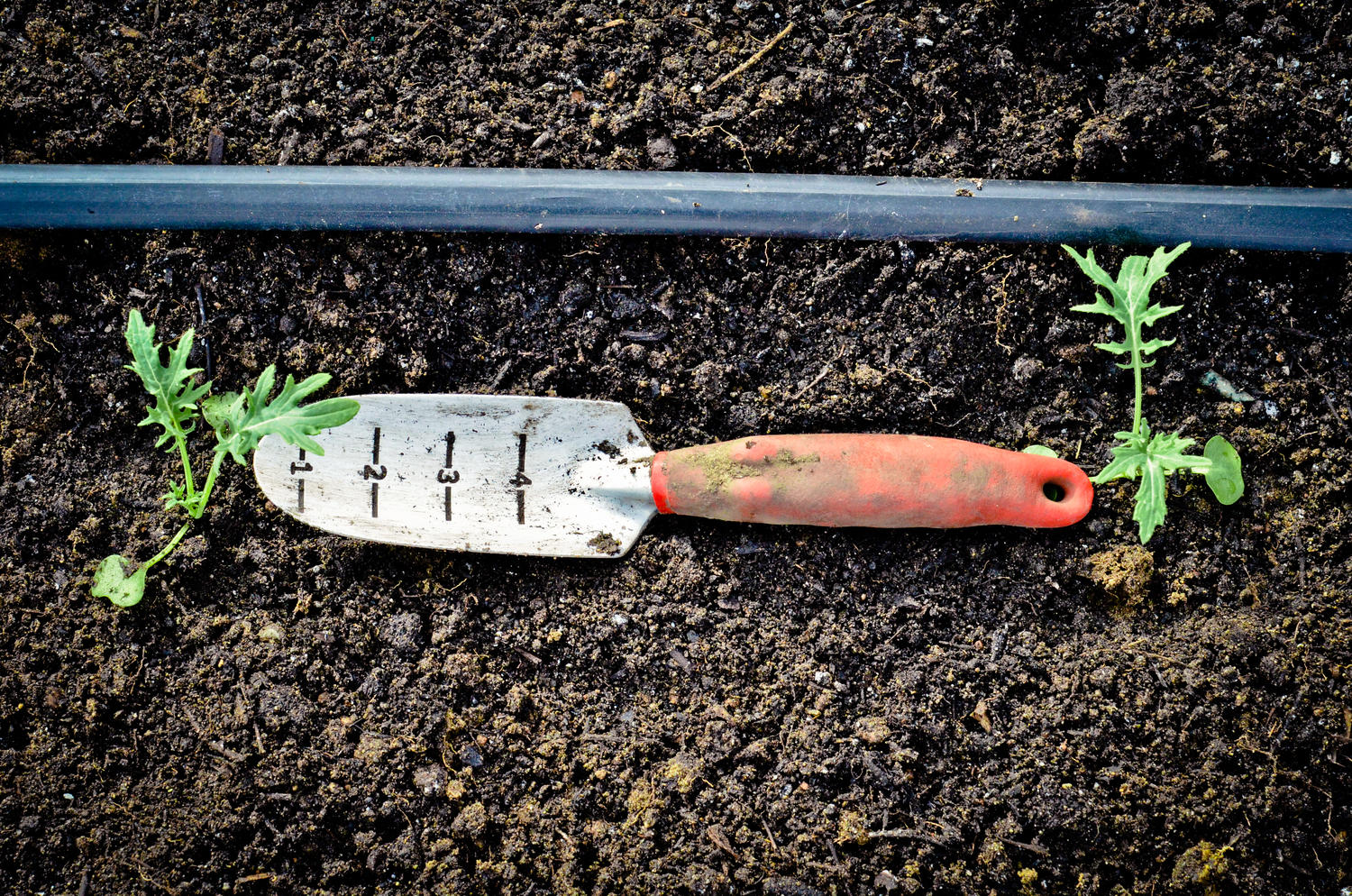
5). Soil: There is a reason it matters what kind of soil you plant in and why we often add compost to our garden beds. Soil health is important because plant roots absorb all of the nutrients they need from the dirt, such as phosphorus, nitrogen, potassium, etc. We eat vegetables so that our own bodies can absorb these nutrients!
Now that we know the five things plants need to be successful, we are really to germinate our own seeds! Germination is just the process of a seed sprouting and growing to become a plant. We'll learn that when a seed is exposed to proper conditions for germination, water is taken in through the seed coat which causes the embryo’s cells inside to enlarge and break the seed coat open. Then the first root emerges, followed by the shoot, which is the part we see above soil and contains the stem and leaves.
For this experiment you will need:
- A plastic bag (ideally sandwich sized)
- Dried beans (black, navy, pinto and kidney beans work best)
- A paper towel
- Time!
Steps:
1). Talk to your student about the kind of experiment you want to design. Here are a few ideas:
- Use one kind of bean, put them in a sunny spot of your house, and track the changes daily.
- Use more than one kind of bean. Using different beans allows you to test the germination rate (growth) between and make predictions about who you think will sprout first.
- Use one kind of bean, but manipulate the conditions. Place one group of beans in the sun and another in a dark closet. Make a prediction about how each will do. (You can also manipulate water and space.)
- Or design your own!
2). Gather your materials.
3). Fold the paper towel a few times until it looks like it will fit snug in the bottom of the plastic bag. Then hold the folded paper towel under cold, running water - just long enough to get the whole piece wet! Ring out so towel is damp, not drenched.
4). Put the paper towel in the bottom of the plastic bag. Now place beans on top of paper towel.
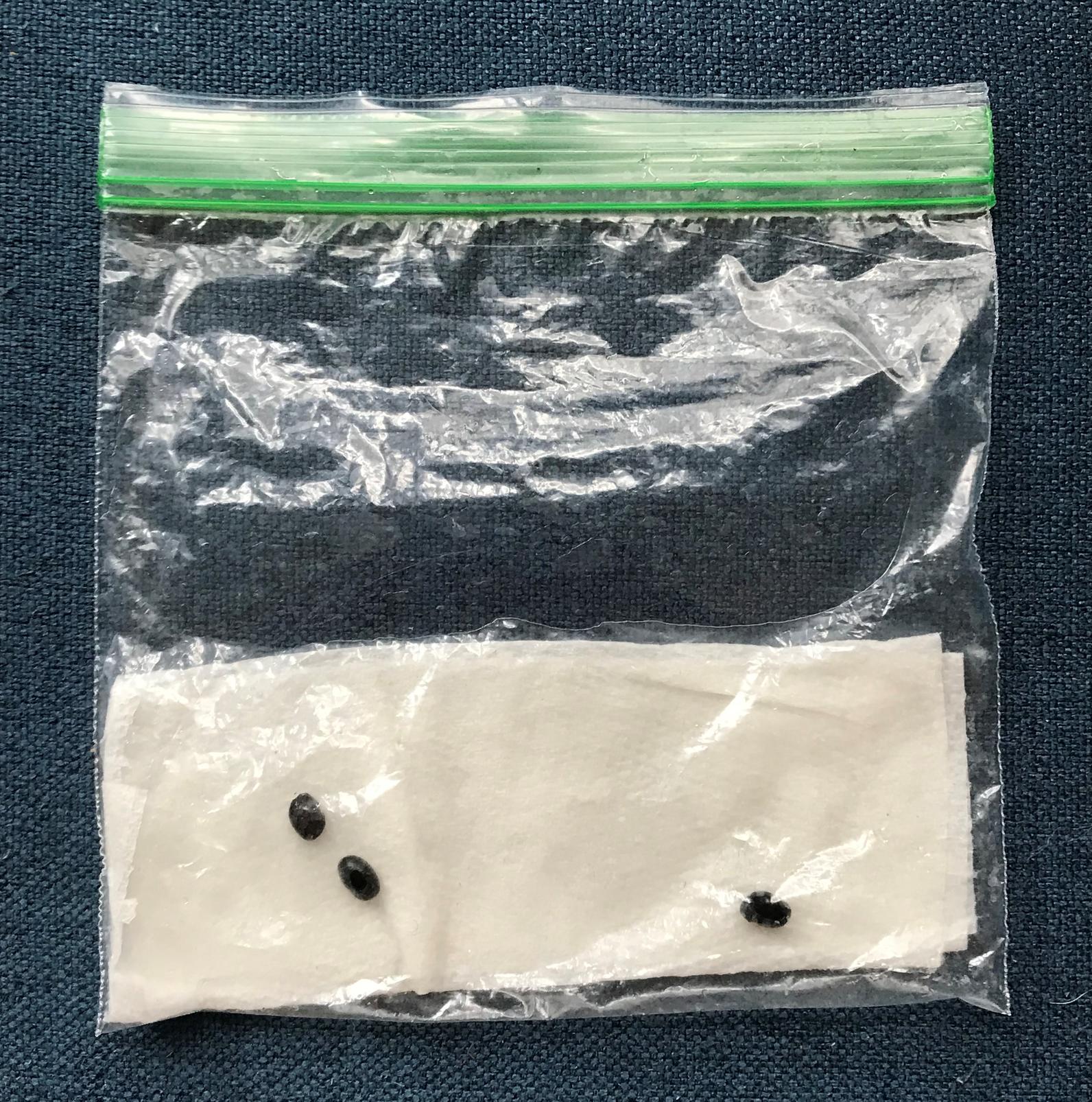
5). Choose a spot you will keep your bag of beans for the duration of the experiment. Maybe a window sill, taped to a window or any other place where the plant will receive nature light. This step will differ depending on what kind of experiment you chose to conduct.
6). Wait! It will take anywhere between a 7 days to two weeks for your beans to germinate. Let your student know that it is possible some beans will never germinate because they are old or were kept in an environment that made them inactive. I left mine by the window for two weeks, here were my results:
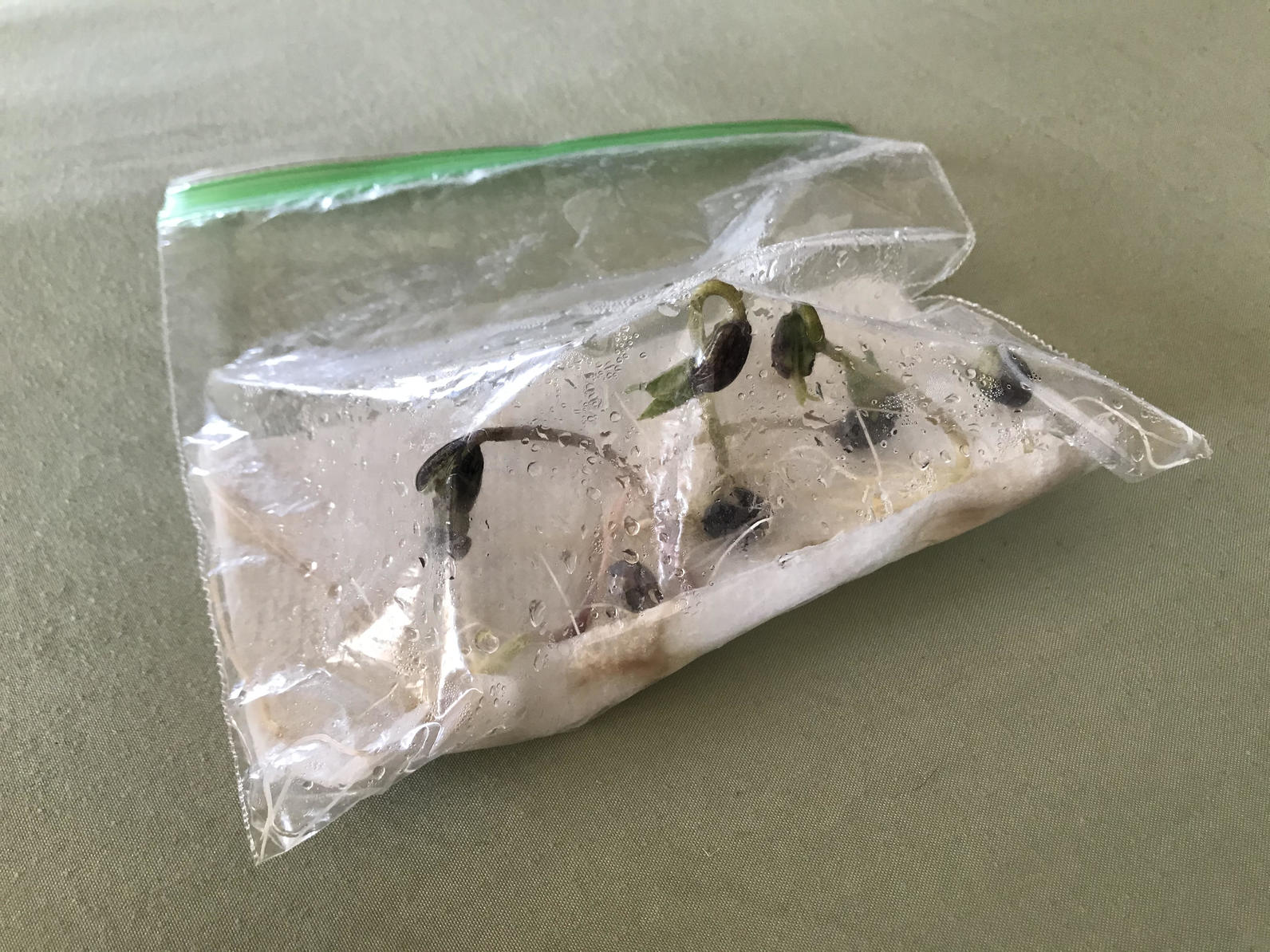
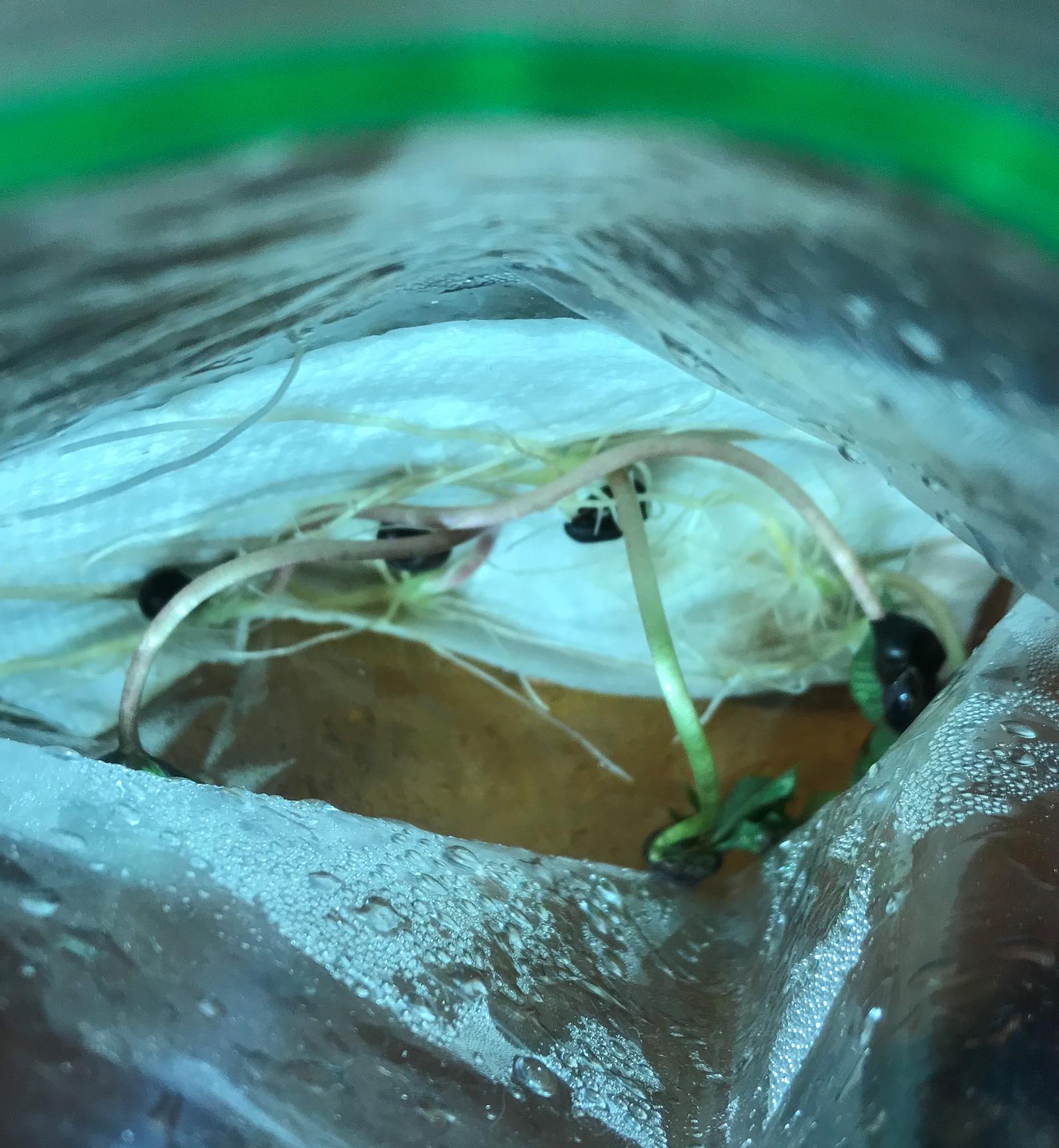
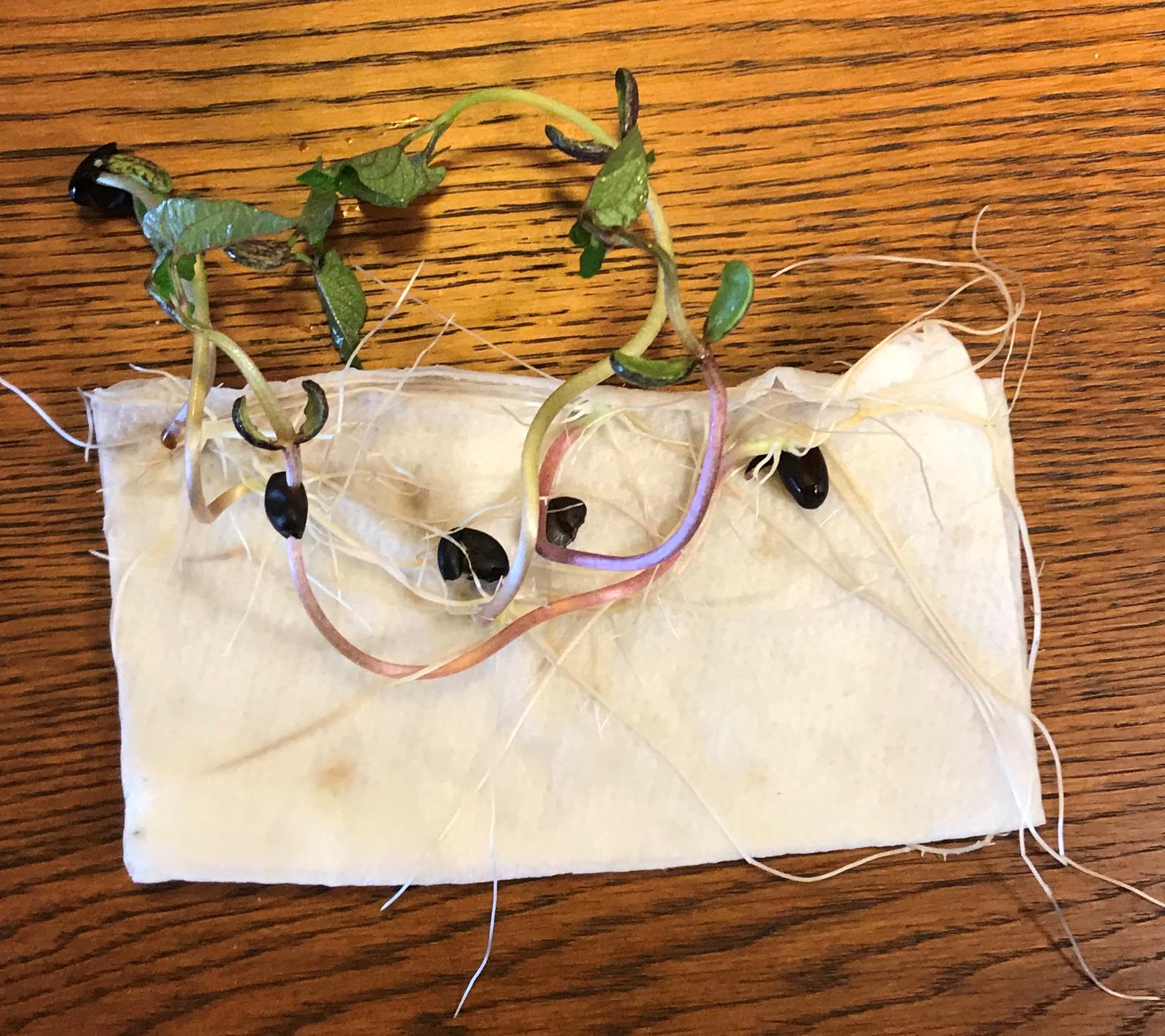
7). Optional: grab a notebook and pencil to draw pictures of your observations each time you check on your bean. After the experiment, these pictures will serve as a great guide to germination! You could also use a ruler to measure how long the roots your sprout has!
Discussion questions:
- Did some seeds have higher germination rates than others?
- We're your predictions correct? Why or why not?
- Do you think seeds are living?
- If you used different seeds - did size seem to play a part in how fast they germinated?
- How did the five needs of plants play a part in your experiment? (Other than soil!)

